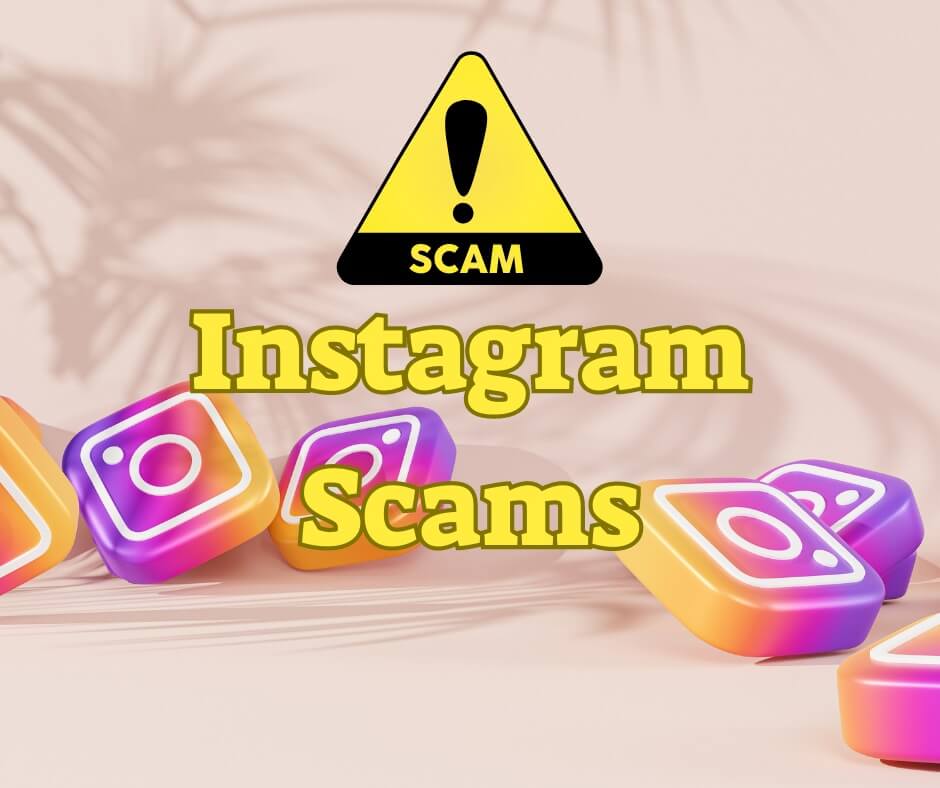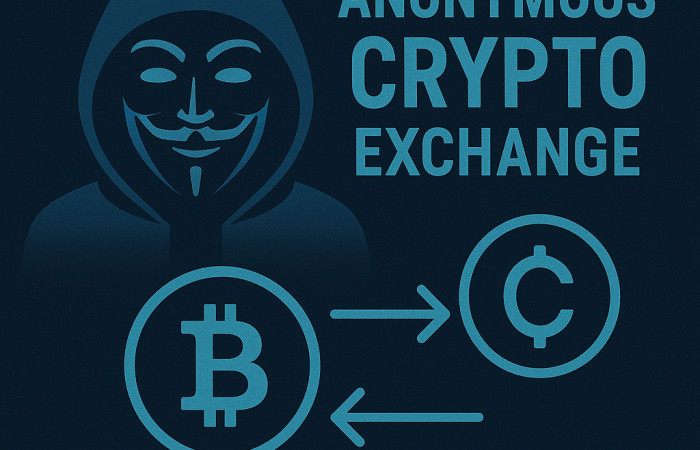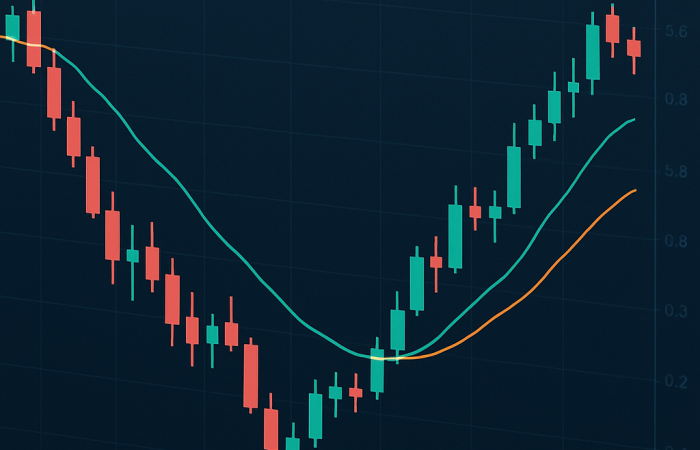In the thriving universe of Instagram, a growing threat looms – Instagram scams. Behind the allure of perfect photos and compelling stories, deceitful plots are weaving a web of digital dangers. Instagram has become a fertile ground for scammers, from hacked influencers to dubious online deals.
This guide shines a light on these shadowy tactics, equipping you with the knowledge to stay safe while you explore, connect, and shop on Instagram because your Instagram journey should be inspiring, not alarming.

Introduction
Brief Overview of Instagram and Its Popularity
Instagram is a social networking app for sharing smartphone photos and videos. Created by Kevin Systrom and Mike Krieger in 2010, it was later acquired by Facebook in 2012. As of 2023, Instagram has approximately 2.35 billion active users worldwide each month, making it one of the most popular social networking sites.
Instagram’s popularity comes from its easy-to-use interface, visual-first approach, and robust set of features like stories, IGTV, reels, shopping, and more. It’s become a platform for everyone – from individuals sharing their lives through pictures to influencers reaching their audience to businesses advertising their products. The growth of Instagram’s user base and its high level of user engagement have made it a critical tool for social media marketing.
Explanation of the Rise in Social Media Scams
As social media platforms like Instagram have gained popularity, they’ve also become hotbeds for various types of scams. Scammers are drawn to these platforms due to their large, diverse user base, the anonymity they can provide, and the potential for high rewards.
The rise in social media scams can be attributed to several factors:
- Ease of Access and Anonymity: Social media platforms allow scammers easy access to millions of users worldwide. They can create fake profiles without verification, making it hard for victims and authorities to track them down.
- Trust in Social Platforms: Many people have a high level of trust in social media platforms, particularly when they are interacting with friends or people they believe to be real. Scammers exploit this trust.
- Increasingly Sophisticated Scam Techniques: Scammers are honing their methods, making their ploys increasingly elusive. They exploit social engineering, fraudulent URLs, and imitation websites to trick their victims. Moreover, they’re also fooling the social networks themselves. A prime example is cloaking, where scammers showcase harmless content to the platform’s moderation systems or algorithms, but users see different, deceptive material. This tactic helps them evade the platform’s security and scam detection, making their deceptive plots harder to uncover.
- The proliferation of E-commerce: As more people turn to online shopping, particularly via social media platforms, scams related to e-commerce have also risen. These include counterfeit products, non-delivery of goods, and fraudulent charges.
As a result, it’s more important than ever for users to be educated about these scams, how they work, and how to protect themselves.
An Example
On June 22, 2023, we received the following complaint from a person who reported losing $660 for an Instagram scam:
I was scammed for cryptocurrency on Binance through Instagram by three individuals. I have been scammed, and a total of ₱37,000.00 was taken from me due to cryptocurrency theft. I received a message from an Instagram user named Rhianna Lorain (@1_rhianneyks), who suggested contacting @coach_claraa if I wanted to earn ₱30,000.00 through Binance. I believed them because they claimed to be a living testimony, along with Diane Kate Flores-Roble (@diane.kateflores). Many of our conversations seemed genuine, and transactions were made. I even attempted to call Coach Clara, and although she answered, there was no actual conversation as she claimed she couldn’t hear me. I was informed that she had numerous clients who had achieved great success with the process. Initially, I transferred ₱5,000.00 as the first investment, with the promise of receiving ₱70,000.00 or more in return. However, I received an email requesting an additional $205 for the pin fee for withdrawal. Subsequently, I received another email stating that I needed to pay $370 for tax/insurance and commission since I would be receiving $1,500. Finally, I received an email demanding another $438 as a withdrawal fee, in order to cash out a total of $1,820. At that point, I realized I was being scammed and did not proceed with the final payment.
The victim was contacted via Instagram by individuals who claimed to be able to help them earn money through cryptocurrency trading on Binance. However, they deceived them and asked for various payments under pretenses, indicating fraudulent activity.
Understanding Instagram Scams
Understanding Instagram scams is crucial as it equips users to navigate the platform safely, protecting them from financial loss, identity theft, or emotional distress.
Informed users can also aid in curbing these scams by reporting suspicious activity, helping make Instagram a safer community for everyone.
Definition of Instagram scams
Instagram scams refer to deceptive practices carried out on the Instagram platform with the intent to defraud, deceive, or harm users.
These scams can take many forms, including phishing attempts, fake giveaways, romance scams, fraudulent sales, and more.
Typically, these involve tricking users into sharing sensitive information, making illegitimate payments, or unknowingly spreading the scam to others.
A brief history of Scams on Instagram
Like any other social media platform, Instagram has had its share of scams since its inception in 2010. Here’s a brief history of some of the most common scams encountered on Instagram:
Fake Accounts and Catfishing (2010-Present)
Almost as soon as Instagram began, scammers started creating fake accounts. These accounts often impersonate celebrities, influencers, or ordinary individuals.
They are used to trick people into providing personal information and money, or in some cases, to carry out “catfishing” schemes where the scammer engages in deceptive online romances.
“Who Viewed Your Profile” Scams (2012-Present)
These scams influence users’ curiosity about who is viewing their Instagram profiles. Users are lured into clicking on a link or downloading an app with the promise of revealing this information.
Still, instead, their account details are often stolen, or they may inadvertently download malicious software.
Instagram Lottery Scam (2014-Present)
This scam usually involves a message from a fake account claiming that the user has won a lottery or sweepstakes of some kind.
To claim the prize, users are often asked to provide personal information or make a payment for supposed fees or taxes.
The “Instagram Ugly List 2016” Scam
This scam involved users receiving a notification that they had been tagged in an “Ugly List.”
Curiosity would often get the better of them, and when they clicked on the link to see the post, they would be led to a page that asked them to enter their Instagram login details, which the scammers would then steal.
Influencer Scams (2016-Present)
With the rise of influencers on Instagram, scams related to this also started appearing.
Scammers create accounts pretending to be influencers or promising users that they can become influencers, often to extract money or personal information.
Shopping and Product Scams (2018-Present)
With the introduction of Instagram’s shopping features, scams involving fake products or fake stores have become more common.
Users are tricked into purchasing products that either don’t exist or are of significantly lower quality than advertised.
Instagram Verification Scams (2018-Present)
Scammers send direct messages to users, offering Instagram verification for a fee.
Instagram, however, does not charge for verification.
COVID-19 Related Scams (2020-Present)
With the onset of the COVID-19 pandemic, scams related to selling fake protective equipment, fake vaccines, and fraudulent charities emerged on the platform.
Instagram Phishing Scams (2022-Present)
The most common scam on Instagram in the years 2022-2023 is phishing. In a phishing scam, individuals may receive a scam email or a fake direct message from a bogus profile that attempts to hijack their Instagram account.
Scammers often use cloned login pages with spelling errors and design discrepancies to deceive users into providing their login credentials.
Types of Instagram Scams
Phishing Scams
In a phishing scam, individuals may receive an email or a direct message that appears to be from Instagram but is actually from a scammer. The message may claim that the user’s account has been compromised and ask them to confirm their login details via a link. The link leads to a bogus website that mimics the Instagram login page. Sometimes, these scams can be highly sophisticated and hard to detect. They may use Instagram’s logo and design elements to appear legitimate.
Once the scammers have the user’s login credentials, they can gain control of the account and use it for malicious purposes. This can include sending spam messages, posting inappropriate content, or even extorting the user by demanding payment for the account’s return.
“Get Rich Quick” Scams
These scams often appear as posts or ads promising high returns on investments or money-flipping schemes. They may promise that you can quickly make large amounts of money for a small investment. The scams often use images of luxury goods, cash, or screenshots of bank accounts to convince users of their legitimacy.
Users who fall for these scams and send money or personal information to the scammers lose their investment and rarely see any of the promised returns. In some cases, the scammers may continue to target the victim with additional scams.
Romance Scams
Romance scams involve scammers creating fake profiles and striking up relationships with users. The scammer may claim to be in a difficult situation or facing an emergency and request financial assistance from the victim.
Victims of romance scams can lose significant amounts of money. The emotional toll can also be considerable, as victims often form emotional attachments to their scammer.
Fake Influencer Scams
Scammers create accounts pretending to be well-known influencers or promising users that they can become influencers. They may ask for payment for a shout-out, promotion, or collaboration that never happens.
Users who fall for these scams can lose money and may also experience a breach of trust or damage their reputation if they publicly associate themselves with the fake influencer.
Online Shopping Scams
These scams involve fake online stores or products. Scammers may create convincing advertisements for products at extremely low prices. However, the products either don’t exist or are significantly lower quality than advertised.
Victims of online shopping scams often lose money and receive nothing or a low-quality item in return. They may also have their credit card information stolen if it was entered on the scammer’s website.
Case Studies of Noteworthy Instagram Scams
Jonathan Reuben, a 24-year-old accountant, was scammed out of £17,000 via an Instagram account he followed. The account owner, Gurvin Singh, used his platform to claim he got rich quickly through foreign exchange trading. Singh offered his Instagram followers the chance to follow his get-rich-quick trades. Reuben invested initially, saw some profits, and then invested more. His profits plummeted over two days, and he could not withdraw his money. He lost all contact with Singh and anyone involved. He reported the scam to the police, his banks, and Instagram.
The scam had a significant financial impact on Reuben, costing him £17,000. This case also highlights the psychological impact of such scams, as victims often feel violated and helpless. Furthermore, scams like these have increased since the coronavirus outbreak. The average number of Instagram frauds reported monthly increased by over 50%, with the reported amount of money lost rising to about £200,000 a month.
Facebook, which owns Instagram, stated that it fights proactively against such content with spam detection technology and is investigating Singh’s account. The company said it has a safety and security team of 35,000 people working to keep the platforms safe, and it blocks millions of inauthentic accounts every day.
The Financial Conduct Authority (FCA) added Singh to a list of unauthorized traders targeting people in the UK, advising investors to deal only with FCA-authorized financial firms. However, Action Fraud’s National Fraud Intelligence Bureau stated there was no criminal inquiry into Singh’s activities.
Complaints
On July 18, 2023, one of our partners received the following complaint from someone who lost more than $50K:
I was approached by a woman on Instagram and later on WeChat in January 2023. She befriended me and claimed to be an experienced cryptocurrency investor who could assist me. Trusting her, I deposited funds into Crypto.com, and she instructed me to transfer them to a particular website. However, in March 2023, when I wanted to withdraw some of my funds, I discovered that I would need to add more funds to access my money. It was at that point that I realized I had fallen victim to a scam and decided not to send any more funds to the fraudulent individuals. As a result, I was unable to recover the funds I had initially deposited.
On September 20, 2023, we received the following complaint:
What happened is that I was on Instagram when a girl I knew from a long time ago created a new account. I followed it, and she messaged me, saying, “What’s good?” I replied, “Nothing, what about you?” She informed me that Instagram was glitching and asked if I could give her my number so she could send me a link. She wanted me to share it with her to help recover her account. After doing so, I received a verification code. I provided it to her, but she claimed it had expired. I didn’t reattempt the process. Shortly after, I received a notification that someone was attempting to access my account from an Apple device in Los Angeles. Subsequently, I lost access to my Instagram account. Now, she’s using my account to message others, requesting money and codes. When I tried to retrieve my account by contacting the associated number, they demanded a $50 payment via Zelle or Cash App to provide the password. Their email is mbkopeyemi@gmail.com.
On September 21, 2023, we received the following complaint:
I was scammed on Instagram. They took both accounts, and I can’t log back into them. They demanded $50 in exchange for returning my accounts. They deceived me into providing them with links and codes related to my accounts, making me believe it was for their accounts through text messages. They communicated with me using one of my friends’ accounts, leading me to believe my friend needed assistance. It appears they altered the email associated with my accounts and removed my phone number, possibly replacing it with their own. I urgently need to retrieve my accounts.
On September 22, 2023, we received the following complaint from a person who reported being scammed for $3500:
I fell victim to a Bitcoin scam on Instagram, leaving me financially devastated. The individuals advertised themselves as an investor in Bitcoin and other cryptocurrencies, promising returns on investments. Trusting their words, I invested all my available funds. The payment was sent through Remitly, but they ceased communicating with me after the transaction. I am extremely worried as I am left with no money and am seeking help to recover my lost funds. I can provide their Instagram ID as proof of our interaction.
On October 7, 2023, we received the following complaint from a person who reported being scammed for $600:
I want to alert you to a scam that’s currently happening. The scammers are using the following names:
- Mary Morgan on Instagram.
- Joyce Oben at the phone number +1 202 750 1435.
They target individuals on Instagram, asking for financial assistance but specifically requesting Steam cards.
Complaints We Received in November 2023
An individual promised to give me $3,500, which initially seemed like an unexpected windfall. However, this promise was a ruse, as their true intent was to gain control of my Instagram account. In the process of this deceptive offer, I was misled into providing access to my account. Subsequently, the individual usurped it, changing the login credentials and effectively locking me out. This left me without access to my personal social media presence and at risk of having my online identity compromised.
The next victim reported being scammed for $370:
They contacted me on Instagram, offering money, and told me I only had to pay a $20 fee. However, as things progressed, they continually claimed that I had to pay additional fees, each time asserting it was the last one. Eventually, I realized that there would always be another fee, leading me to the conclusion that I was being scammed—a realization that came too late, as I had already fallen for it.
On November 11, 2023, one of our partners received the following complaint:
An Instagram profile approached me, claiming that mining Bitcoin would increase my funds. However, I’ve only incurred fees so far without any financial gain.
How Instagram and Law Enforcement are Responding
Instagram has taken several measures to combat scams on its platform. The company has launched several features to help users stay safe online, including:
- Two-factor authentication: This is an extra layer of security designed to ensure that users are the only ones who can access their account, even if someone else knows their password.
- Comment warnings: Instagram uses artificial intelligence to detect and alert users about potentially offensive comments before they are posted.
- Bulk comment management: Users can delete comments in bulk and block or restrict multiple accounts that post negative comments.
- Tagging products from Instagram Checkout: This effort safeguards users from potential shopping scams. Instagram has created a specific checkout experience for products tagged in posts.
- Restricting DMs: Instagram has implemented measures to prevent adults from sending direct messages to users under 18 who don’t follow them. This feature uses machine learning to predict a user’s age.
- Reporting a scam: Instagram has made it easier for users to report potentially fraudulent activity through its Help Center.
Instagram is also committed to reducing the spread of false information and harmful content about COVID-19. They have made it easier for users to access accurate information and removed content that could put people at risk.
Effectiveness of the Response & Law Enforcement
As for the effectiveness of these responses, it’s clear that Instagram has made significant strides in implementing safety measures to protect its users. However, the effectiveness of these measures may vary, and scams still do occur on the platform. Furthermore, Instagram’s algorithm is not yet sophisticated enough to catch all scams, suggesting that there is still room for improvement.
On the legal side, law enforcement agencies such as the UK’s Financial Conduct Authority (FCA) have been active in adding alleged fraudsters to lists of unauthorized traders.
How to Identify Instagram Scams
Warning Signs and Red Flags
- Unsolicited Contact: If an unknown individual or business reaches out without prompt, it might be a scam. Legitimate companies typically don’t make unsolicited contact.
- Request for Personal Information: Be wary of anyone asking for personal or financial information. Scammers often masquerade as trusted entities to steal this information.
- Pressure Tactics: Scammers frequently use pressure tactics, creating a sense of urgency to act quickly. This is designed to make you act before you think the situation through.
- Too Good To Be True Offers: Scams often lure victims with irresistible deals or opportunities, such as a significant discount on goods, a large sum of money, or an exclusive opportunity.
- Poor Grammar and Spelling: Messages with grammatical and spelling errors can indicate a scam.
Verification Methods
- Check User Profiles: Look at when the account was created, the number of posts, and the quality of content. Scammers often have newly created accounts with few posts or low-quality content.
- Use Search Engines: Quickly search the person, company, or offer. Other victims may have reported their experiences.
- Reverse Image Search: If a profile picture or product image seems suspicious, use a reverse image search to see if it’s been used elsewhere.
- Secure Websites: If redirected to a website, ensure it starts with “https,” indicating a secure connection.
In today’s digital world, having the skills and knowledge to navigate safely online is essential. Understanding the nature of scams, recognizing the signs, and verifying information independently are all crucial parts of digital literacy. It empowers users to protect themselves from scams, report suspicious activity, and share their knowledge with others to prevent them from falling victim to scams.
How to Protect Yourself from Instagram Scams
Best Practices for Online Safety
- Be Cautious: Be wary of unsolicited messages or requests, especially those asking for personal information or money.
- Secure Your Account: Use strong, unique passwords and enable two-factor authentication for your Instagram account.
- Verify Before Trusting: If a message or offer seems suspicious, do your research. Check the profile details, search online for known scams, or ask others for their opinions.
- Don’t Click on Suspicious Links: These can lead to phishing sites that steal your personal information.
- Keep Personal Information Private: Avoid sharing sensitive information like your home address, financial information, or other personal details.
Steps to Take if You’ve Been Scammed
- Change Your Passwords: If you’ve clicked on a scam link, change your password immediately to protect your account.
- Contact Your Bank: If you’ve lost money or given out your financial information, contact your bank as soon as possible.
- Report the Scam: Make sure to report the scam to Instagram and any other relevant authorities.
- Warn Others: Share your experience by commenting below this page to help prevent others from falling for the same scam.
How to Report Scams on Instagram
- Report the Profile: You can report a profile by going to their profile, tapping on the three dots at the top right corner, and selecting “Report.”
- Report a Message: To report a scam message, open the conversation, tap on the “i” at the top right corner, and select “Report.”
- Report a Post or Ad: To report a scam post or ad, tap on the three dots above the post or ad and select “Report.”
Remember, your reports are integral in helping Instagram take action against scammers and keeping the platform safe for all users.
Conclusion
As Instagram continues to grow and evolve, so do the scams that lurk in its corners. Instagram scams are more than just an unfortunate side effect of the digital age; they’re an invasive threat that targets unsuspecting users, exploiting their trust for nefarious gains. However, knowledge remains our most potent defense. Understanding the nature of these scams, recognizing the warning signs, and knowing how to protect ourselves can turn the tide against these digital deceptions.
However, it’s important to remember that the responsibility doesn’t solely lie with us. Social media platforms, law enforcement agencies, and policymakers must collaborate and continue their efforts to detect and combat these scams.
Ultimately, our collective vigilance and commitment to online safety will ensure that Instagram remains a place for connection, creativity, and genuine community. So, let’s navigate this vibrant digital landscape with caution and confidence, knowing we’re well-equipped to spot and sidestep the snares of Instagram scams.
If you are a victim of Instagram scams, please let us know by commenting below, and if you have lost a significant amount of money, do not lose hope. We can help you recover your funds!



